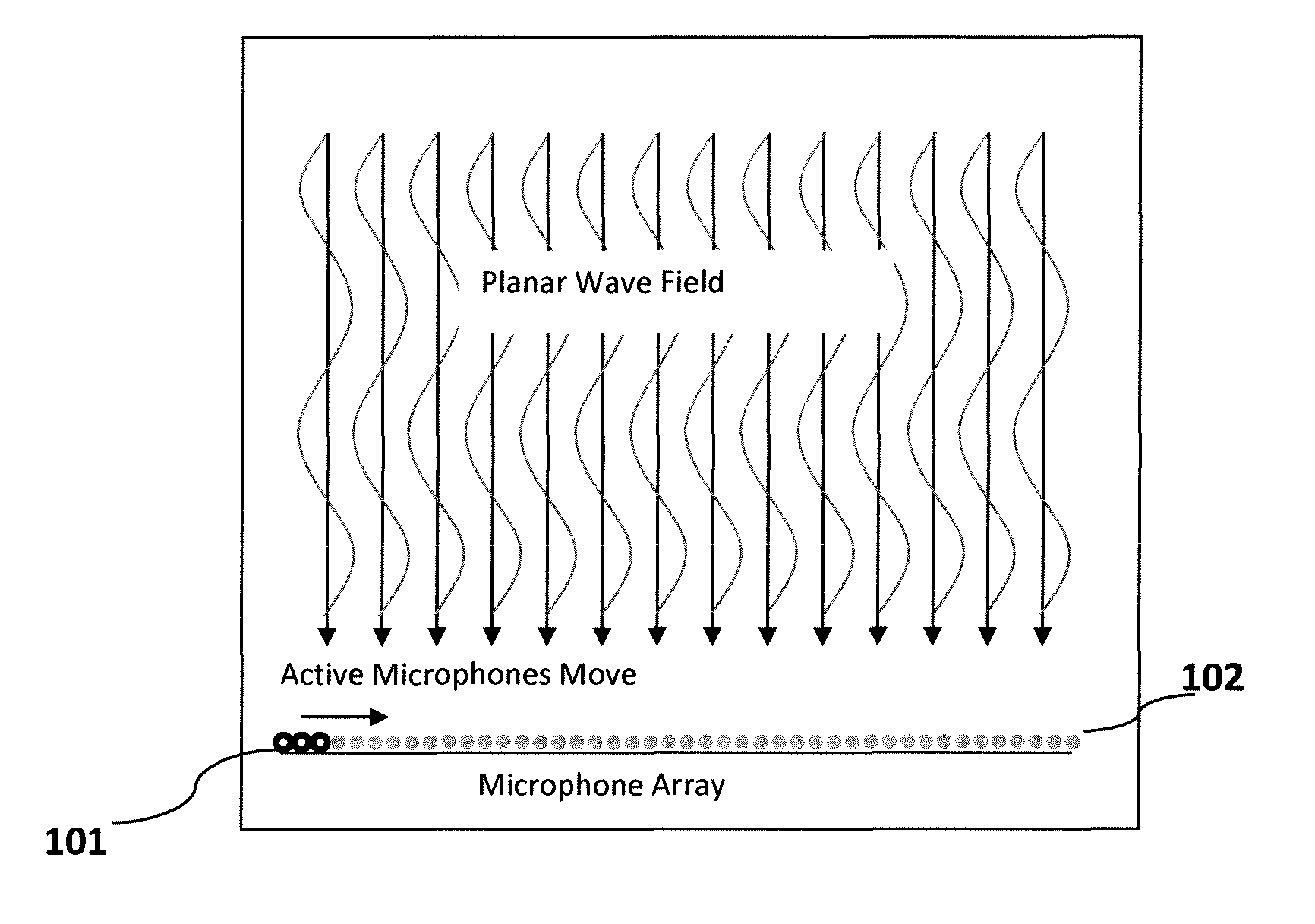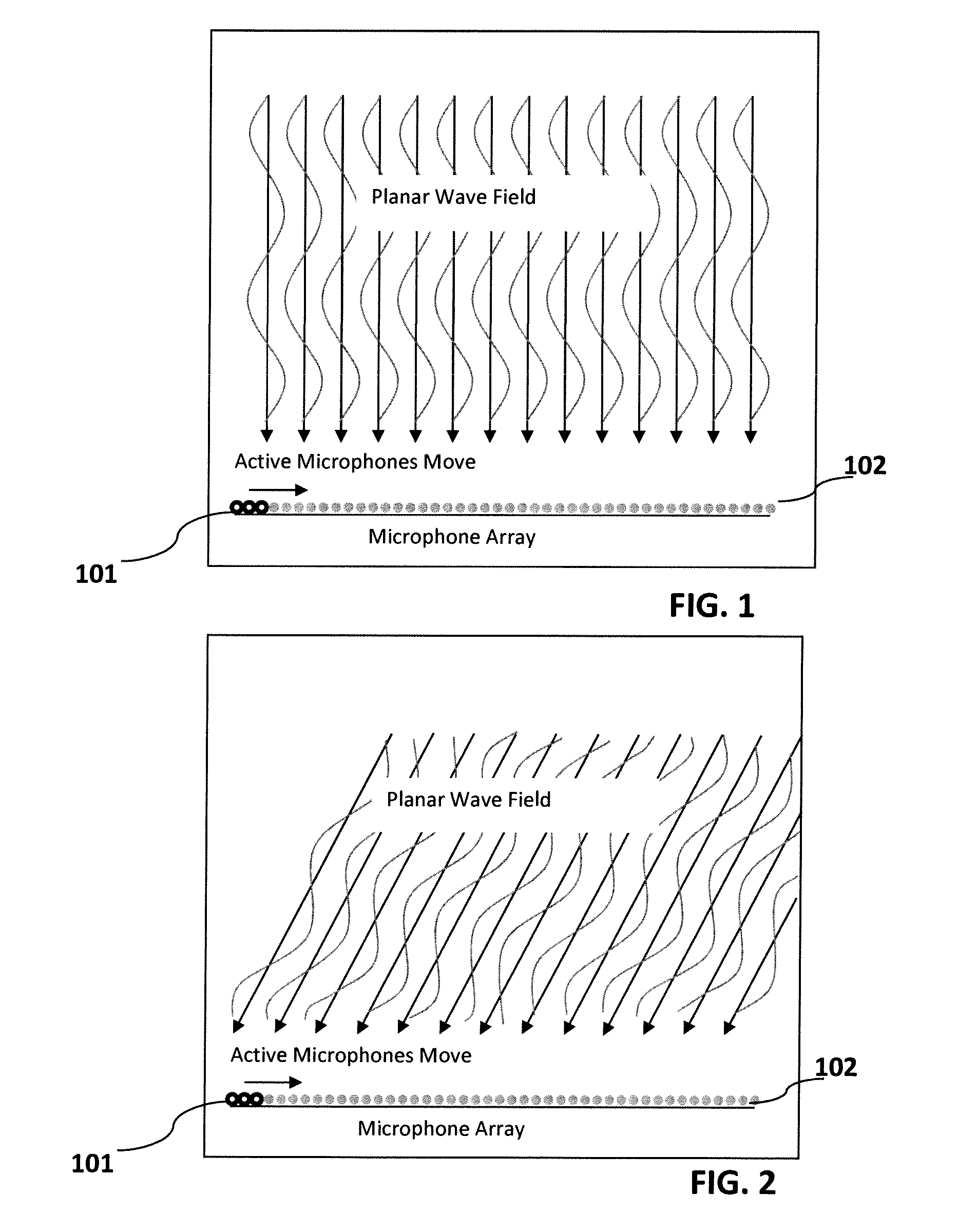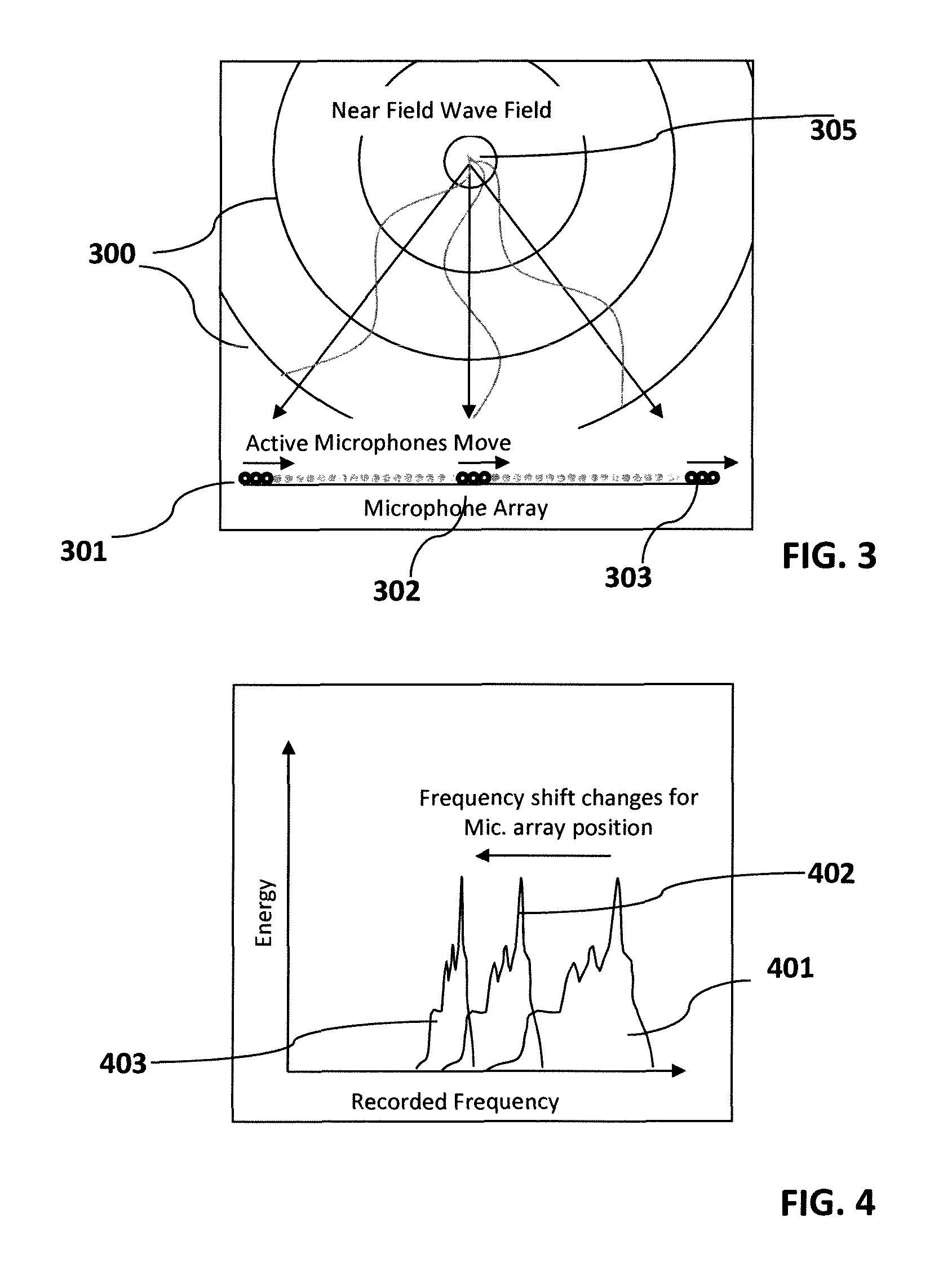Methods and systems for Doppler recognition aided method (DREAM) for source localization and separation
a doppler recognition and source localization technology, applied in the direction of transducer details, electrical transducers, signal processing, etc., can solve the problems of difficult estimation of correlated sources in echoic environments, difficult source localization, and difficult acoustic localization and analysis of multiple industrial sound sources such as motors, pumps
- Summary
- Abstract
- Description
- Claims
- Application Information
AI Technical Summary
Benefits of technology
Problems solved by technology
Method used
Image
Examples
Embodiment Construction
[0040]Methods for Doppler recognition aided methods for acoustical source localization and separation and related processor based systems as provided herein in accordance with one or more aspects of the present invention will be identified herein as DREAM or the DREAM or DREAM methods or DREAM systems.
[0041]The DREAM methods and systems for source localization and separation simulate a moving microphone array by sampling different microphones of a large microphone array at consecutive sampling times. An assumption is that sources far away from the array generate planar wave fields. FIGS. 1 and 2 illustrate the concept of a virtually moving microphone array for planar wave fields from sources at different locations.
[0042]The DREAM concept illustrated. FIG. 1 shows that a planar wave field arrives from a source orthogonal to the array. The frequencies recorded by the virtually moving microphone array 101 represent the frequencies of the arriving wave. FIG. 2 shows planar wave field ar...
PUM
 Login to View More
Login to View More Abstract
Description
Claims
Application Information
 Login to View More
Login to View More - R&D
- Intellectual Property
- Life Sciences
- Materials
- Tech Scout
- Unparalleled Data Quality
- Higher Quality Content
- 60% Fewer Hallucinations
Browse by: Latest US Patents, China's latest patents, Technical Efficacy Thesaurus, Application Domain, Technology Topic, Popular Technical Reports.
© 2025 PatSnap. All rights reserved.Legal|Privacy policy|Modern Slavery Act Transparency Statement|Sitemap|About US| Contact US: help@patsnap.com



